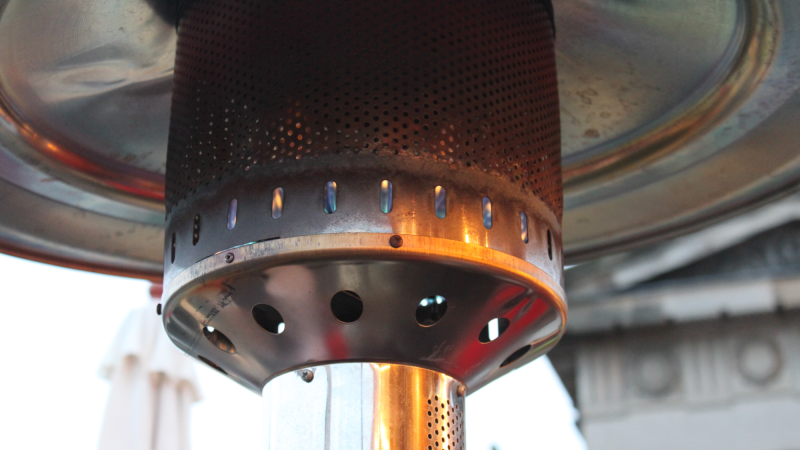New York Is Embracing Outdoor Heat Lamps Right As France Is Rejecting Them

If outdoor dining comes to New York City, gas problems won’t be limited to people who eat too many Brussels sprouts.
A City Council bill that would let restaurants do curbside dining all year would also allow restaurant owners to deploy propane heating lamps to keep their customers warm. But the city is beginning to embrace the idea of heating up outdoor seating just as the France, a country known for its warmed-up year-round dining scene, is phasing out heated terraces because they’re hell on the environment.
Under a bill sponsored by Council Member Antonio Reynoso, restaurants would be allowed to use propane heat lamps to warm their outdoor customers, an update to current city rules that only allow for the use of outdoor natural gas heaters (which require extensive paperwork and plumbing work to hook up to gas pipes). It’s an obvious solution to the issue that New York City is cold in the winter, even in this era of climate change.
But outdoor restaurant heating, once seen as a national point of pride in France, is on the way out across the entire country after multiple cities decided heated terraces at restaurants were too wasteful. One French engineer determined that running multiple heaters for just five months uses nine times more electricity than the average household. And another study said that the average gas heater emits 3,300 kilograms of carbon dioxide per year. For comparison’s sake, the average passenger car emits 4,600 kilograms of carbon dioxide per year, according to the EPA.
Reynoso for his part, said that he was trying to help the restaurant industry in an emergency, and saw the propane heaters as a temporary solution to what will hopefully be a temporary crisis.
“Continuation of the outdoor dining program is a simple and effective way to continue to the support the industry through this tough time, and the most efficient way to continue the program into the colder months is with the use of heat lamps,” said Reynoso. “However, I do recognize the environmental impacts of this equipment and want to emphasize that their use is only as an emergency stopgap measure.”
Environmental organizations also seem to recognize that outdoor heating will be a necessary evil when it comes to continuing outdoor dining, and asked restaurants to choose less-wasteful electric heaters (which emit about 500 kilograms of carbon dioxide per year on average).
“Reimagining our streetscape to prioritize diners, bikers, and pedestrians will improve our public health, air quality, and economy,” said Julie Tighe, the president of the New York League of Conservation Voters. “Heating lamps would help facilitate this alternative use of streetspace into the cold weather months. While we do not oppose the proposal to legalize propane heating lamps for outdoor dining, we are concerned about the climate impacts that this fossil fuel would cause and strongly encourage restaurants to use electric heating lamps when feasible.”
Although France is banning the heated terrace, other cold weather cities do throw gas heaters into the mix for their outdoor eating. In Edmonton, Canada, for instance, restaurateurs keep outdoor diners warm with non-metal furniture, blankets, and, yes, gas or electric heaters.





